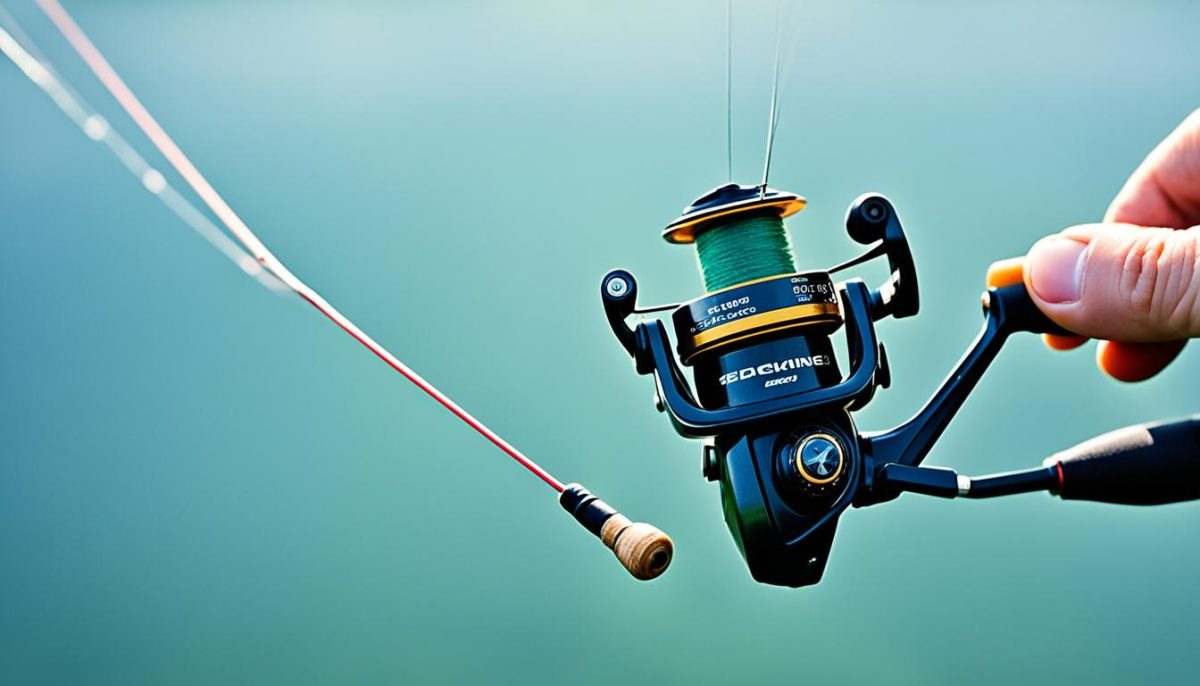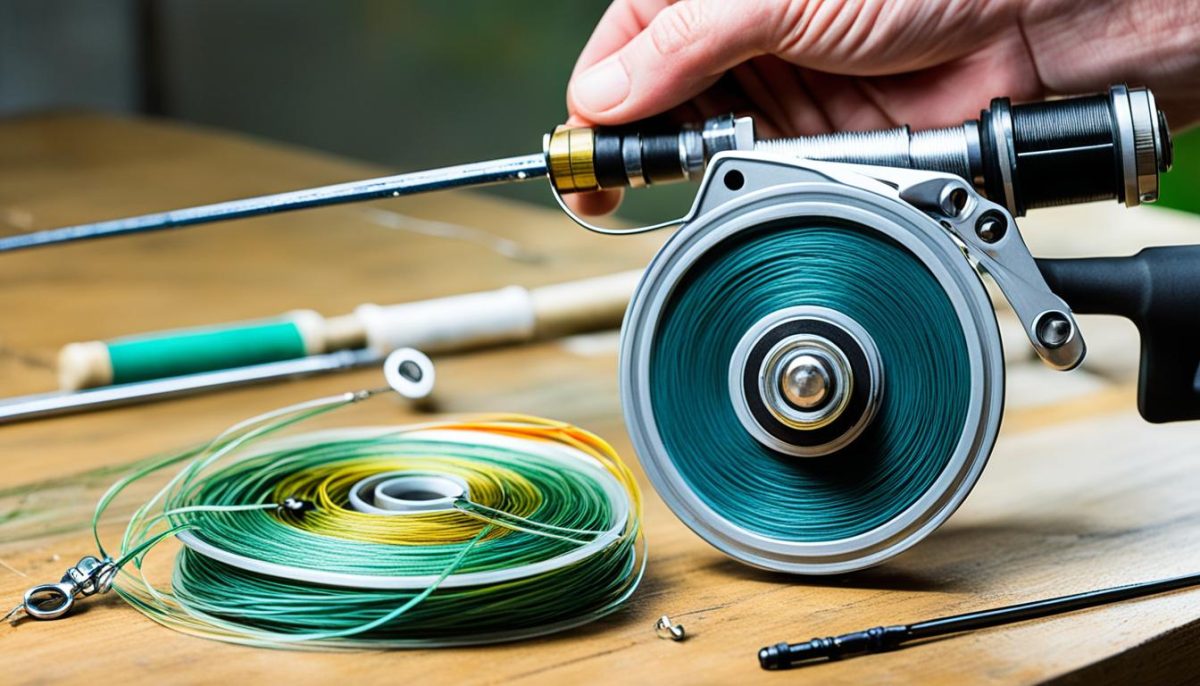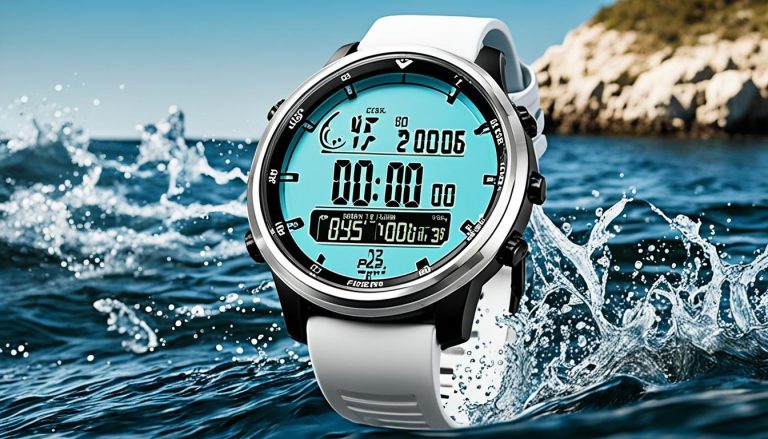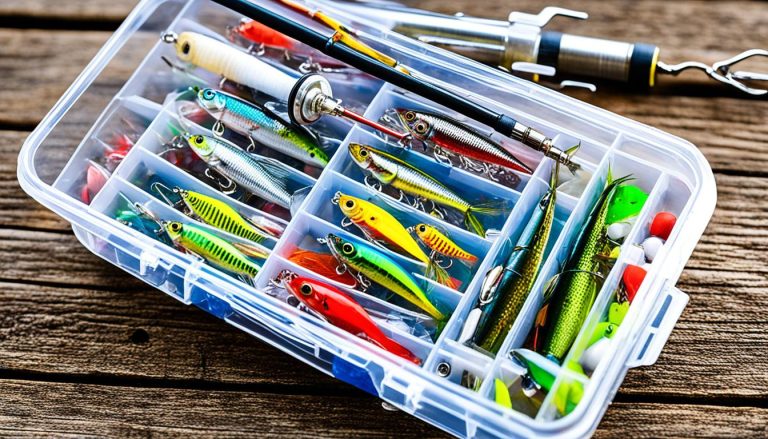Want to learn how to put line on your spinning reel like a pro? Look no further! In this article, we will guide you step-by-step on how to properly spool your spinning reel, ensuring a smooth and efficient fishing experience. Whether you’re a seasoned angler or a beginner, mastering this essential skill is key to ensuring optimal performance from your spinning reel.
Before we dive into the details, let’s take a quick look at why it’s important to know the correct technique for “Put Line on Spinning Reel”. Properly spooling your reel ensures that your line is evenly distributed, minimizing the chances of tangles, bird nests, and other frustrating fishing mishaps. By following our instructions, you’ll be well on your way to casting with confidence and reeling in those big catches.
Now, let’s get started with the first step: choosing the right fishing line for your spinning reel. Click on the next section to learn more!
Choosing the Right Fishing Line for Your Spinning Reel
Before you can start spooling your spinning reel, it’s crucial to select the right fishing line for optimal performance. Choosing the appropriate fishing line involves considering various factors such as line strength, diameter, and material. Let’s explore each of these aspects to help you make an informed decision.
Types of Fishing Lines
There are several types of fishing lines available, each with its own set of characteristics and benefits:
- Monofilament Fishing Line: This versatile line is popular for its affordability, excellent knot strength, and high visibility. It is a great option for beginners and anglers who fish in freshwater.
- Braided Fishing Line: Known for its exceptional strength and sensitivity, braided lines are made by weaving multiple strands of synthetic fibers. The thin diameter allows for increased line capacity and improved casting distance.
- Fluorocarbon Fishing Line: Fluorocarbon lines are virtually invisible underwater, making them ideal for situations where fish are easily spooked. They have low stretch, excellent abrasion resistance, and are resistant to UV rays.
Considerations for Choosing Fishing Line
When selecting the fishing line for your spinning reel, keep the following factors in mind:
- Line Strength: The fishing line should match the weight of the fish species you are targeting. Lighter lines, such as 4-8 lb test, are suitable for small fish, while heavier lines, such as 10-20 lb test, are better for larger species.
- Line Diameter: Thinner lines offer less visibility underwater and allow for longer casting distances. However, they may sacrifice some strength. Consider the fishing conditions and target species to determine the appropriate line diameter.
- Line Material: Each fishing line material has its own advantages. Monofilament lines are versatile and stretchable, while braided lines offer superior strength and sensitivity. Fluorocarbon lines are nearly invisible underwater. Consider the characteristics that best suit your fishing style and target species.
By considering these factors and evaluating your fishing needs, you can choose the right fishing line that complements your spinning reel and enhances your fishing experience.
| Type | Strength | Diameter | Material |
|---|---|---|---|
| Monofilament | Varies (4-30 lb test) | Varies (0.008-0.04 inches) | Nylon |
| Braided | Varies (10-80 lb test) | Varies (0.002-0.02 inches) | Synthetic fibers (polyethylene) |
| Fluorocarbon | Varies (4-25 lb test) | Varies (0.007-0.03 inches) | Fluoropolymer |
Preparing Your Spinning Reel for Line Spooling
Now that you have chosen the perfect fishing line for your spinning reel, it’s time to prepare your reel for line spooling. Taking the time to properly prepare your spinning reel will ensure a smooth and hassle-free fishing experience. Follow these steps to get your reel ready for action:
Step 1: Removing Existing Line
If your spinning reel already has line on it, you’ll need to remove it before spooling the new line. Start by loosening the drag on your reel to prevent any unnecessary tension. Next, locate the line roller or bail arm and open it to expose the line. Untie any knots or connections, and slowly wind the line back onto the spool. Make sure to dispose of the old line properly, as it can be harmful to the environment.
Step 2: Checking Reel Components
Before spooling new line, it’s essential to inspect your spinning reel for any signs of wear or damage. Start by examining the bail arm, line roller, and spool for any cracks, dents, or abrasions. Check the drag system and handle to ensure they are functioning smoothly. If you notice any issues or suspect damage, it’s best to address them before proceeding. This will help maintain the longevity and performance of your reel.
Step 3: Ensuring Proper Reel Setup
Proper reel setup plays a significant role in line spooling. Begin by securing the reel to a stable surface or a reel spooling station. This will prevent any unnecessary movement during the spooling process. Ensure that the line guide or spool lip is aligned correctly with the bail arm to prevent line twists. Make sure that the line can feed smoothly through the guides without any obstructions or tangles.
Remember, a well-prepared spinning reel will help you achieve optimal casting distance, prevent line tangling, and increase your chances of landing that prized catch. Take the time to properly prepare your spinning reel, and it will reward you with a seamless fishing experience.
Now that your spinning reel is ready for line spooling, it’s time to move on to the next section: “Step-by-Step Guide to Spooling Line on a Spinning Reel.” Follow along as we guide you through each stage of the spooling process, ensuring you have a perfectly spooled reel for your next fishing adventure.
Step-by-Step Guide to Spooling Line on a Spinning Reel
Now that your spinning reel is ready, it’s time to put line on it. Follow this detailed, step-by-step guide to ensure a well-spooled spinning reel. With proper line spooling, you can enhance the performance and enjoyment of your fishing experience.
- Start by attaching the fishing line to the spinning reel. The method of attachment may vary depending on the type of reel you have. For most spinning reels, you will need to open the bail, thread the line through the line roller, and tie a secure knot.
- Once the line is attached, close the bail and hold the line between your thumb and index finger. Apply light tension to keep the line from tangling or twisting as you spool it onto the reel.
- Next, turn the handle of the spinning reel to begin winding the line onto the spool. It’s important to maintain consistent tension on the line throughout the spooling process. This will help prevent line twists and ensure even line distribution.
- Continue turning the handle and winding the line onto the spool. Make sure to distribute the line evenly across the spool to prevent line bunching or uneven line lay.
- As you spool the line, periodically check for any line twists or tangles. If you notice any issues, stop spooling and carefully untangle the line before continuing.
- Once you have spooled an adequate amount of line onto the reel, leave a small distance between the line and the edge of the spool. This will prevent overfilling and allow for proper casting and line retrieval.
- Finally, trim off any excess line, leaving a small tag end to secure the line on the spool. You can use a pair of fishing line scissors or a sharp knife to cut the line cleanly and neatly.
By following these step-by-step instructions, you can effectively spool line onto your spinning reel and ensure optimal performance on your fishing trips. Now that your spinning reel is properly spooled, you’re ready to tackle the waters and reel in some unforgettable catches.

Pro Tips:
For an even smoother spooling process, consider using a line spooling station or a pencil/pencil-shaped object to hold the line as you wind it onto the reel. This will help maintain consistent tension and reduce the risk of line twists or tangles.
Additionally, make sure to choose the appropriate line size and type for your target species and fishing conditions. Consult local fishing experts or tackle shops for recommendations and insights.
Tips and Tricks for Effective Line Spooling
In this final section, we will share some valuable tips and tricks for effective line spooling. Mastering these techniques will help you prevent line twists and tangles, achieve proper line tension, and optimize your fishing experience. Implementing these tips will enhance the performance and longevity of your spinning reel, ensuring a smooth and successful fishing adventure.
Preventing Line Twists and Tangles
Line twists and tangles can be frustrating and time-consuming to fix. To avoid these issues, follow these tips:
- Before spooling, place the line spool upright to prevent twisting.
- Ensure that the line is coming off the spool in the same direction that it will be wound onto the spinning reel.
- Keep the line taut while spooling to maintain a proper line alignment.
Achieving Proper Line Tension
Proper line tension is essential for smooth casting and effective retrieve. Consider these tips to achieve optimal tension:
- Apply gentle pressure on the line spool as you wind it onto the spinning reel to maintain consistent tension.
- Keep the line taut by adjusting the drag on your spinning reel to prevent loose or slack line.
- Regularly check the line tension while spooling to ensure it remains consistent throughout the process.
Other Useful Insights
Here are a few additional tips and tricks to enhance your line spooling technique:
“One useful technique to prevent line twists is to spool a few yards of backing line onto your reel before adding the main fishing line.”
“Consider moistening the line slightly with water or a line lubricant while spooling to reduce friction.”
By following these tips and tricks, you can ensure a smooth and efficient line spooling process, minimizing frustration and maximizing your fishing success.

| Tips for Effective Line Spooling |
|---|
| Prevent line twists and tangles by keeping the line taut and aligning it properly while spooling. |
| Achieve proper line tension by applying consistent pressure and adjusting the reel’s drag. |
| Consider using backing line and lubricants for smoother spooling. |
Maintenance and Care for Your Spinning Reel and Fishing Line
Proper maintenance and care are essential for ensuring that your spinning reel and fishing line perform at their best and last for a long time. By following these simple yet effective maintenance practices, you can keep your gear in optimal condition and ready for your next fishing adventure.
Cleaning your spinning reel is a crucial step in maintenance. After each fishing trip, make sure to remove any dirt, debris, or saltwater residue from the reel. Use a soft cloth or brush to gently wipe down the exterior, paying attention to all the nooks and crannies. Additionally, periodically clean the bail, spool, and line roller to prevent any build-up that can affect the reel’s performance.
Lubrication is another key aspect of maintenance. Apply a small amount of reel oil or grease to the appropriate parts of your spinning reel, including the handle, bail arm, and gears. This will ensure smooth operation and minimize friction, extending the lifespan of your reel. However, be cautious not to over-lubricate as excess lubrication can attract dirt and impede performance.
When it comes to storing your spinning reel and fishing line, remember to do so properly. Always loosen the drag on your reel before storage to prevent unnecessary pressure on the drag system. Store your reel in a cool, dry place, away from direct sunlight, extreme temperatures, and humidity. Additionally, make sure to spool off any excess fishing line and inspect it for any signs of wear or damage. Replace the line as needed to maintain its strength and reliability.




